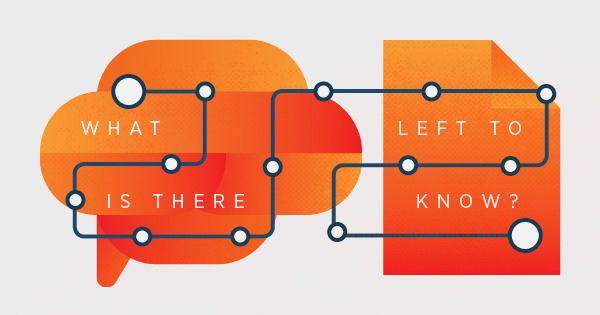If you’re a marketing or design professional today, in addition to all of your other responsibilities, you are most likely tasked with buying print services. Years ago, a dedicated production manager or print buyer would find qualified vendors, get bids, submit files and deal with the printer. Unfortunately, that position has almost completely disappeared from the industry. These days, you’re responsible. Considering that you’re already trying to stay up-to-date on things like customer experience, personalization and big data, is it realistic to think you can also acquire a deep understanding of a complex subject like print?
Take paper, for example. Many creative professionals today can’t dedicate the time needed to get familiar with terms like opacity, formation, brightness or permanence. Given their other competing priorities, the benefit of having this knowledge isn’t worth the investment.
For example, do you need to know about opacity to be able to buy print for your most common projects? Probably not. A good print service partner will fill in any knowledge gaps you have to make sure your project uses the appropriate paper, based on the design and specifications.
But, if buying print, should you have a basic understanding of the general types of paper available? Probably. Being familiar with the types will help you know what to ask for when sending a project to print. It will also help ensure that you know what to anticipate in terms of quality and performance. This means a better chance of your final product matching your expectations.
Below is a quick summary of the general types of paper available for business and marketing communications.
Commercial Printing Papers
Coated
During manufacturing, a coating is added to the surface of this paper to limit the amount of ink that gets absorbed during printing. With coated paper, ink stays on top, increasing the sharpness of complex graphics.
Coated paper comes in several finishes:
- Gloss – a shiny surface good for crisp images in full-color printing
- Dull/Silk – a non-gloss surface good for large sections of solid ink and improved readability
- Matte – a low-glare surface, good for readability
Coated paper is ideal for glossy photos, publications, product brochures and catalogs. It is not ideal for materials that need to be written on.
Offset & Opaque (Uncoated)
Offset uncoated paper is sold in large volumes and used in a lot of printing applications. It is more economical than Opaque and it is a good option for when budget is more of a concern than print quality.
Opaque uncoated paper has more opacity than offset, which provides increased brightness. Ink absorbs more evenly on opaque, providing smooth solids and good reproduction. Opaque has less show-through on two-sided printing, which is good when designs have solid blocks of color, bold type and heavy coverage.
Offset and Opaque papers are ideal for long print runs, direct mail, and general business documents.
Text & Cover (Uncoated)
Text & Cover is the phrase used to describe premium uncoated paper. It is more expensive than other uncoated options. Text & Cover provides superior printing reproduction, a variety of colors and a wide array of textures. It can handle finishing options like coatings, foil stamping and embossing. Textures include selections like cockle (rough and wavy), eggshell, felt, laid, smooth and more.
Text & Cover is ideal for high-impact communications like reports, corporate brochures, identity pieces, business cards and luxury packaging.
Specialty
The last category of paper includes more than just paper. The broad “specialty” category includes unique paper options as well as options that are not paper at all. Any material that can be printed on that is not already included in the categories above is considered specialty. Specialty papers include things like metallic, translucent, synthetic (non-tree), thermal, and food packaging.



Leave a Reply